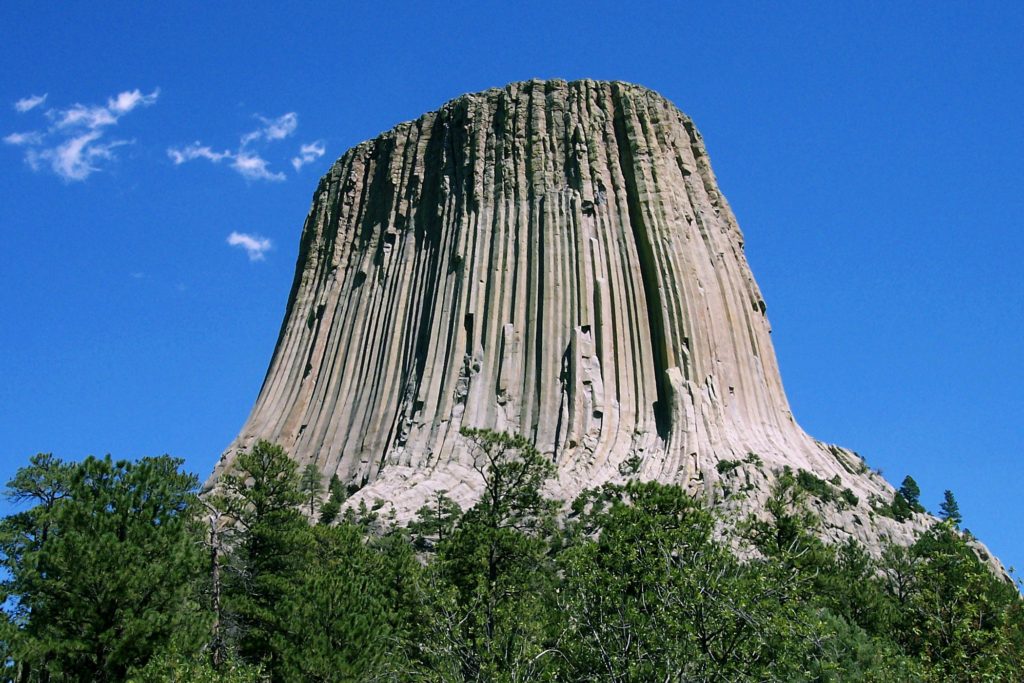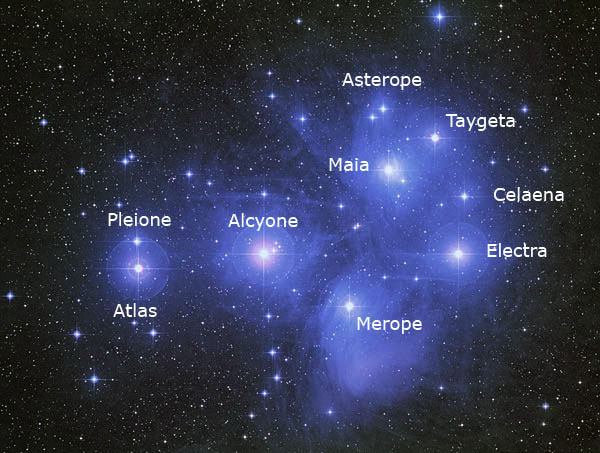The month of May is named after the Greek Goddess Maia. Maia was identified with Roman-era goddess of fertility Bona Dea, whose festival was held in May. Maia is the daughter of Atlas and Pleione the Oceanid, oldest of the seven Pleiades. As the daughters of Atlas, the Pleiades are sometimes also called Atlantides, or mountain nymphs.
The Roman poet Ovid provided a second theory for the origin of the month name in the word maiores (Latin for elders). In the context of the late Russian Empire, a Maykovka is a picnic in the early days of May, hence the name. Special devotions to the Virgin Mary take place in May, and of course Mother’s Day is May 14, 2017. The Eta Aquariids meteor shower are visible until around May 20.

Native American legend incorporates the Pleiades, also know as the Seven Sisters, into its story telling. In one tale, the Devil’s Tower in Utah was the result of seven sisters chased by a bear. They climbed atop a large and ancient tree stump as the bear advanced. The lines on the side of the rock resulted from the bear clawing at them, and the stump grew until it flung the seven sisters into the sky, forming the Pleiades. (From the Lakota)

The Devil’s Tower is also the iconic imagery used in Steven Spielberg’s “Close Encounters of the Third Kind”, which proved the futility of sculpting with mashed potatoes, but did nothing to further evidence of extraterrestrial life. A more fantastic account is related by Ardy Sixkiller Clarke, a Belgrade resident and former Assistant Professor of Education Leadership at Montana State University, whose native heritage is Cherokee and Choctaw. In her book “Encounters With Star People: Untold Stories of American Indians”, Clarke recounts a personal close encounter of the third kind with Star People who visited her as a child in technologically advanced craft.





